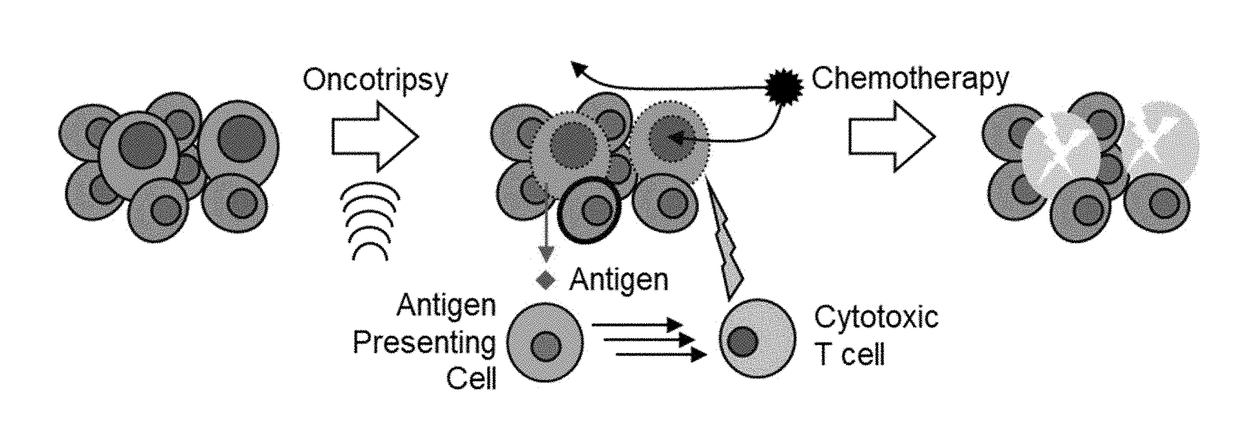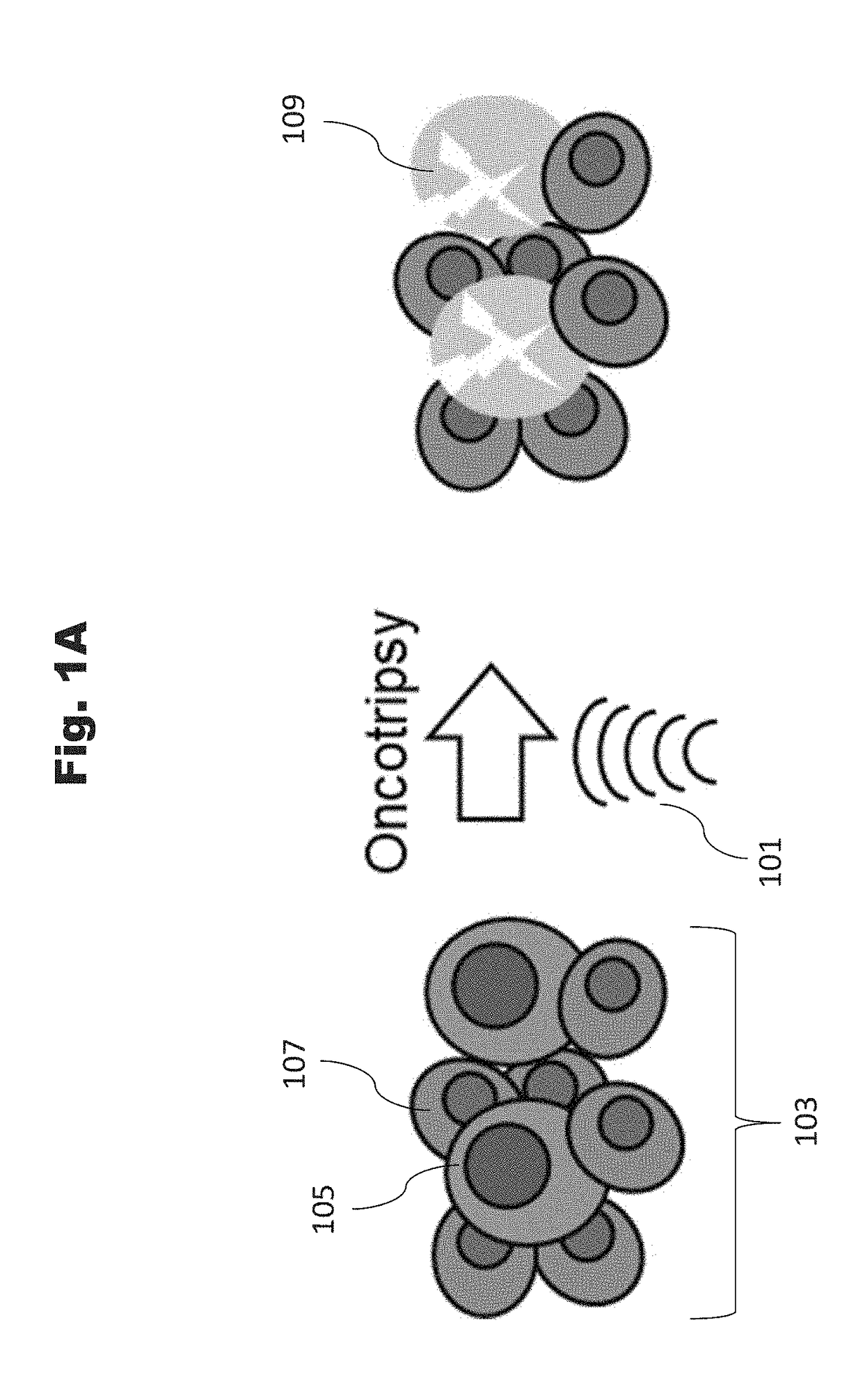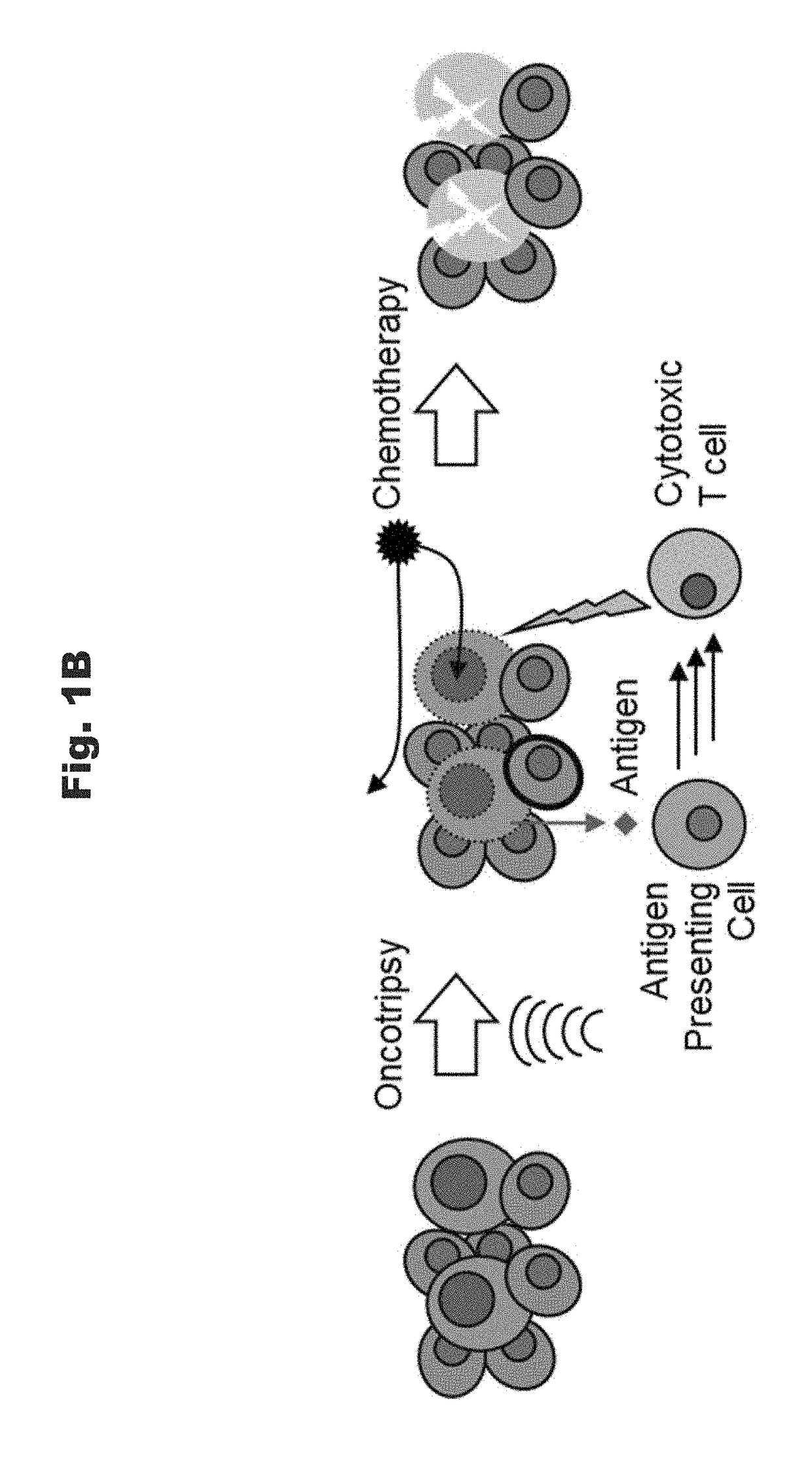Selective Disruption of Neoplastic Cells via Resonant Harmonic Excitation
a neoplastic cell and resonant wave technology, applied in the field of selective disruption of neoplastic cells via resonant wave excitation, can solve the problems of large displacement and system failure structurally
- Summary
- Abstract
- Description
- Claims
- Application Information
AI Technical Summary
Benefits of technology
Problems solved by technology
Method used
Image
Examples
example 1
n of Frequency and Pulse Duration
[0097]Depicted in FIG. 8 are results of an experiment of performing oncotripsy on various cells in which the frequency and pulse duration has been modulated. Three cell types were used, two neoplastic cell types: leukemia derived K562 and U937 lines, and one control cell type of healthy T-cells. The three cell lines were exposed to oncotripsy at three frequencies (300, 500, and 670 kHz) and a range of pulse duration (approximately 1 ms to 100 ms) and their viability post-treatment was measured. The results from the experiment indicate that each cell line responds uniquely to the various frequencies. Notably, the control T-cell line did not appreciably respond to any of the frequencies tested. The two neoplastic lines, however, each responded to the 500 and 670 kHz frequencies resulting in high cell death. Also of note is that the two neoplastic lines had a greater response to shorter pulse durations than the control line, thus each having a lower cri...
example 2
ncotripsy Results
[0098]Depicted in FIG. 9 are results from an in vivo oncotripsy experiment in which mice harboring tumors were treated, resulting in high levels of necrosis. Tumors were implanted subcutaneously of immunodeficient mice (NOD-SCID). The tumor area of a number of mice was treated with 670 kHz and either a pulse duration of 1 or 100 ms. As the results show, treatments with ultrasound induced necrosis with 100 ms pulse duration exhibiting greater necrosis. Control mice, which received no oncotripsy treatment, had no discernable necrosis. These data confirm that oncotripsy can be performed on subjects in vivo.
PUM
 Login to View More
Login to View More Abstract
Description
Claims
Application Information
 Login to View More
Login to View More - R&D
- Intellectual Property
- Life Sciences
- Materials
- Tech Scout
- Unparalleled Data Quality
- Higher Quality Content
- 60% Fewer Hallucinations
Browse by: Latest US Patents, China's latest patents, Technical Efficacy Thesaurus, Application Domain, Technology Topic, Popular Technical Reports.
© 2025 PatSnap. All rights reserved.Legal|Privacy policy|Modern Slavery Act Transparency Statement|Sitemap|About US| Contact US: help@patsnap.com



